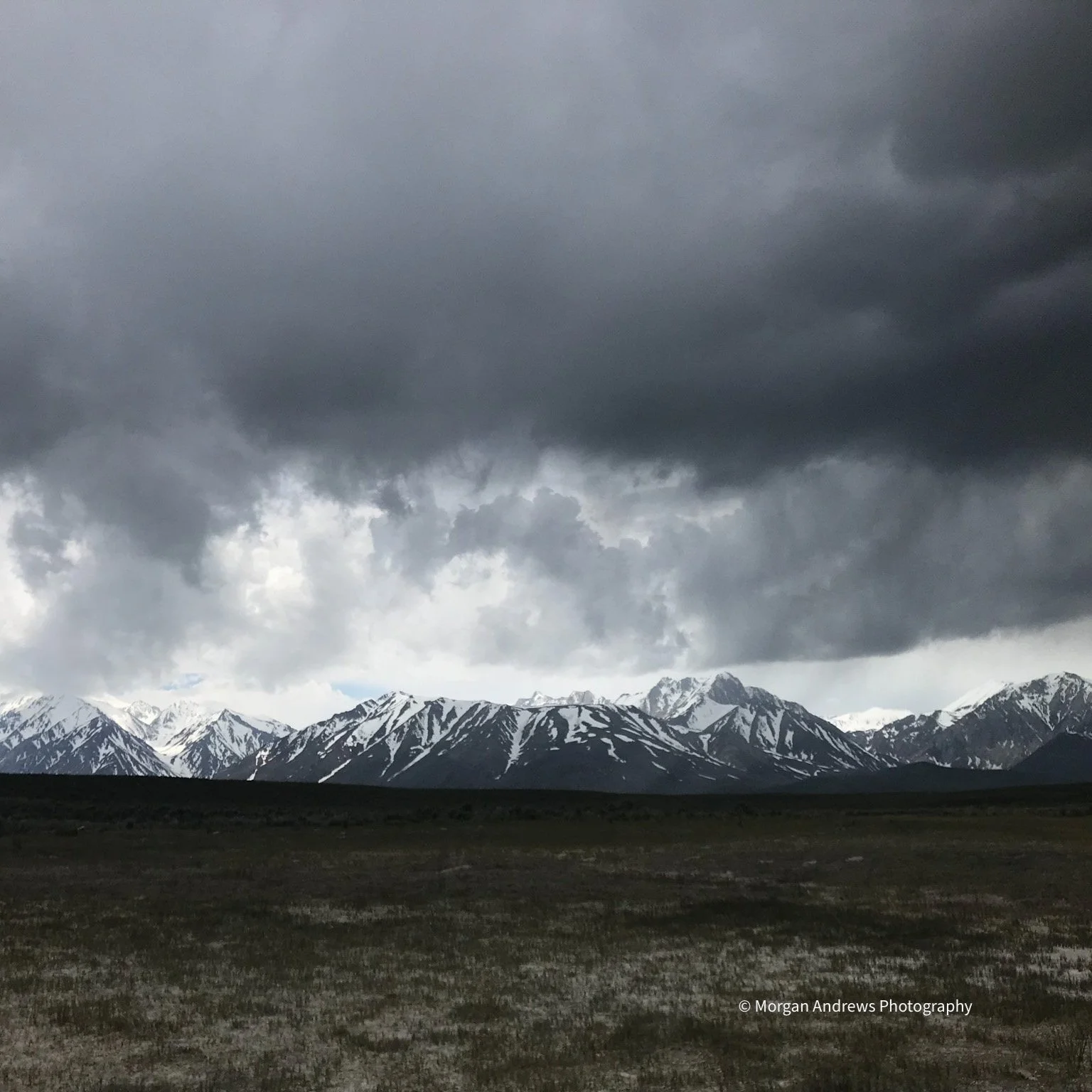Coupled Natural Human Systems: Exploring the importance of jurisdictional boundaries in ecosystems and landscapes
Scale-Dependent Feedbacks Among Protected Areas and Surrounding Socioecological Systems
Administrative boundaries that establish land management jurisdictions affect both ecological and social processes. In the US, undeveloped lands occur in mosaics of public and private jurisdictions with varying management. These mosaics thus support varying regional cultures as well as natural-resources-based economies. These mosaic landscapes also support many species and are sources of ecosystem services such as pollination, carbon fixation, water supply and purification, and pest control. For differences in these mosaics, this research sought to determine (1) how social and ecological boundaries, fragmentation, and connectedness are related; and (2) how such partitioning affects management priorities and outcomes, including social relationships, management decision-making, landscape-scale management challenges, and ecological functioning. Results are intended to enhance regional land management and decision making through a decision-support system shared with stakeholders so as to enhance the scientific basis of land management.
This project explored how administrative partitioning affects feedbacks within and between social and ecological systems. Five mosaics comprising US National Parks and adjacent parcels in the western US were analyzed. How complexity and differences in management across the administrative landscape affect processes and outcomes in terms of connectivity, well-being, decision-making, and cooperation in the social landscape; connectivity of habitat and processes in the ecological landscape; and feedback pathways between social and ecological landscapes were modeled. Research activities included (a) a focus on the influence of the management mosaic on decision-making by managers; (b) soil/vegetation/remote sensing assessment to delineate ecological boundaries; (c) novel development of landscape scale social decision-making and ecological connectivity models; (d) integration of social and ecological data into a generalizable spatial coupled systems model; and (e) an analysis of factors contributing to the success or failure of participatory processes. This research seeks to improve understanding of how management challenges are affected by collaboration and connectivity across boundaries, the scale at which ecological divergence occurs, and factors facilitating attainment of diverse management objectives.
-
Clare Aslan, PhD
Associate Director and Associate Professor, School of Earth and Sustainability
Co-Director, Center for Adaptable Western Landscapes, Northern Arizona University
Products
-
Dayer, A.A., K.H. Redford, K.J. Campbell, C.R. Dickman, R.S. Epanchin-Niell, E.D. Grosholz, D.E. Hallac, E.F. Leslie, L.A. Richardson, M.W. Schwartz. 2020. The unaddressed threat of invasive animals in U.S. National Parks. Biological Invasions 22: 177-188. https://doi.org/10.1007/s10530-019-02128-0
Aslan, C.E., L. Zachmann, M. McClure, B.A. Sikes, S. Veloz, M.W. Brunson, R.S. Epanchin-Niell, B.G. Dickson. 2021. Quantifying ecological variation across jurisdictional boundaries in a management mosaic landscape. Landscape Ecology 36: 1215-1233. https://doi.org/10.1007/s10980-021-01198-7
Aslan, C.E., M.W. Brunson, B.A. Sikes, R.S. Epanchin-Niell, S. Veloz, D.M. Theobald, B.G. Dickson. 2021. Coupled ecological and management connectivity across administrative boundaries in undeveloped landscapes. Ecosphere 12: e03329. https://doi.org/10.1002/ecs2.3329
Tait, M., and M. Brunson. 2021. Evaluating Cooperative Interactions and the Roles Organizations Play in Cross-Boundary Stewardship. Society & Natural Resources 34: 925-942. https://doi.org/10.1080/08941920.2021.1900964
Otto, N., and M. Brunson. 2021. Cross-boundary weed management in protected area–centered ecosystems: how can it work and what makes it harder to achieve? Invasive Plant Science and Management 14: 183-189. https://doi.org/10.1017/inp.2021.24
Tiffany, B., T. Chaudhry, R.W. Hofstetter, C. Aslan. 2022. The Impact of Administrative Partitioning on the Regional Effectiveness of Forest Pest Management in Protected Area-Centered Ecosystems. Forests 13: 395. https://doi.org/10.3390/f13030395
Pepin, K.M., A.J. Davis, R.S. Epanchin-Niell, A.M. Gormley, J.L. Moore, T.J. Smyser, H.B. Shaffer, W.L. Kendall, K. Shea, M.C. Runge, S. McKee. 2022. Optimizing management of invasions in an uncertain world using dynamic spatial models. Ecological Applications 32: e2628. https://doi.org/10.1002/eap.2628
Tait, M., and M. Brunson. 2022. Barriers and opportunities for cooperative wetland management: a case study in the greater Rocky Mountain National Park ecosystem. Wetlands Ecology and Management 30: 257-272. https://doi.org/10.1007/s11273-021-09849-x
Sterner, S., C. Aslan, R. Best, and T. Chaudhry. 2022. Forest Management effects on vegetation regeneration after a high severity wildfire: a case study in the southern Cascade Range. Forest Ecology and Management 520: 120394. https://doi.org/10.1016/j.foreco.2022.120394
Aslan, C., and S. Souther. 2022. The interaction between administrative jurisdiction and disturbance on public lands: Emerging socioecological feedbacks and dynamics. Journal of Environmental Management 319: 115682. https://doi.org/10.1016/j.jenvman.2022.115682
Aslan, C.E., S. Veloz, R.S. Epanchin-Niell, M.W. Brunson, and B.A. Sikes. 2022. Integrating social and ecological predictors to understand variation within ecosystems: a case study of the Great Smoky Mountains National Park PACE. Natural Areas Journal 42(4): 284-292. https://doi.org/10.3375/22-12
Aslan, C.E., L. Zachmann, R.S. Epanchin-Niell, M.W. Brunson, S. Veloz, and B.A. Sikes. 2022. Soil characteristics and bare ground cover differ among jurisdictions and disturbance histories in Western US protected area-centered ecosystems. Frontiers in Ecology and Evolution 10: 1241. https://doi.org/10.3389/fevo.2022.1053548
Otto, N., M. Brunson, and C.E. Aslan. 2023. Disturbance and invasive plant occurrence along high-elevation boundaries surrounding California protected areas. Natural Areas Journal 43(1): 72-77. https://doi.org/10.3375/22-15
Bixler, R.P., R.S. Epanchin-Niell, M.W. Brunson, R.D. Tarver, B.A. Sikes, M. McClure, C.E. Aslan. 2023. How social and ecological characteristics shape transaction costs in polycentric wildfire governance: insights from the Sequoia-Kings Canyon Ecosystem, California, USA. Ecology and Society 28(1): 34. https://doi.org/10.5751/ES-13834-280134
-
Tiffany, B.J. 2019. The Impact of Administrative Partitioning on the Regional Effectiveness of Forest Pest Management in Protected Area-Centered Ecosystems. Master’s thesis, Northern Arizona University. https://www.proquest.com/dissertations-theses/impact-administrative-partitioning-on-regional/docview/2272720958/se-2
Tait, M.K. 2020. Cross-Boundary Stewardship for Wetland Integrity and Resilience in the Greater Rocky Mountain National Park Ecosystem. Master’s thesis, Utah State University. https://doi.org/10.26076/e15f-60dc
Sterner, S. 2020. The Impact of Historical Fire Suppression, Logging, and Reforestation on Vegetation Regeneration After a High-Severity Fire in Northeastern California. Master’s thesis, Northern Arizona University. https://www.proquest.com/dissertations-theses/impact-historical-fire-suppression-logging/docview/2415270987/se-2
Otto, N. 2021. Invasive Plant Occurrence Across Agency Boundaries: Two Case Studies from California. Master’s thesis, Utah State University. https://doi.org/10.26076/c6e9-436b
Stanley, A. 2020. Species Conservation through Partnership: Exploring Conservation Partners in Species “Warranted but Precluded” from Listing. Undergraduate thesis, Cornell University.
-
Tait, M., M. Brunson. 2020. Cross-boundary Wetland Stewardship in the Greater Rocky Mountain National Park Ecosystem, HydroShare, https://doi.org/10.4211/hs.17600892c08447fd9c4df3a5c85b31b7
Otto, N., M. Brunson. 2020. Understanding Cooperative Interaction and Barriers to Cross-Boundary Collaboration for Invasive Species Management, HydroShare, https://doi.org/10.4211/hs.f2bfcdae42e74fccb43f17482795d48d
-
Aslan, C. 2022. Relationships between jurisdictional boundaries and ecological patterns in national park-centered landscapes. North American Congress for Conservation Biology, July 2022, Reno NV.
Aslan, C. 2022. Relationships between jurisdictional boundaries and ecological patterns in national park-centered landscapes. Science Colloquium of Great Smoky Mountains National Park, March 2022, virtual.
Stanley, A., R. Epanchin-Niell, G. Iacona. 2021. Species conservation through partnership: Exploring the presence and activities of partners in species removed from Endangered Species Act listing process due to conservation efforts. Ecological Society of America Annual Meeting, Long Beach CA (virtual).
Treakle, T., R. Epanchin-Niell, G. Iacona. 2022. Factors Associated with the Successful Preemptive Conservation for Species at-risk to be Listed under the US Endangered Species Act. North American Congress for Conservation Biology, July 2022, Reno NV.
Aslan, C.E., M.W. Brunson, R. Tarver, R.S. Epanchin-Niell, S. Veloz, and B.A. Sikes. 2022. Relationships between management trajectories and ecological patterns in management mosaic landscapes (poster). Biennial Conference of Science and Management on the Colorado Plateau and Southwest Region, September 2022, Flagstaff AZ.
-

